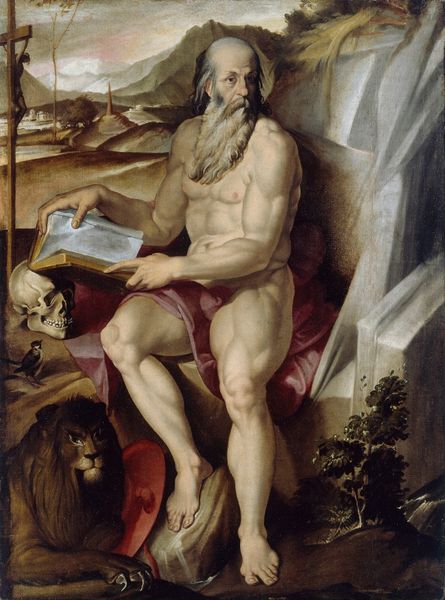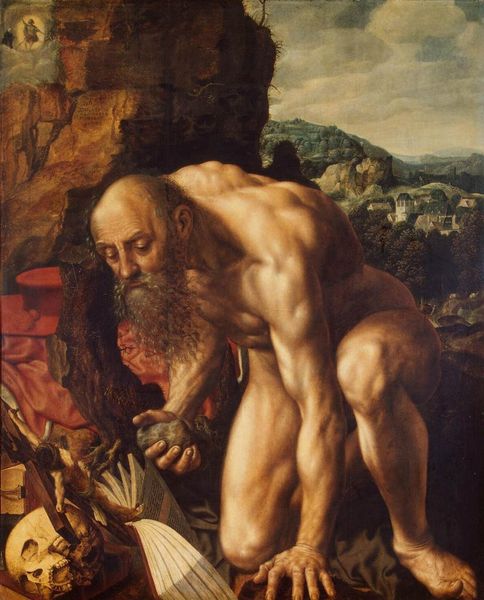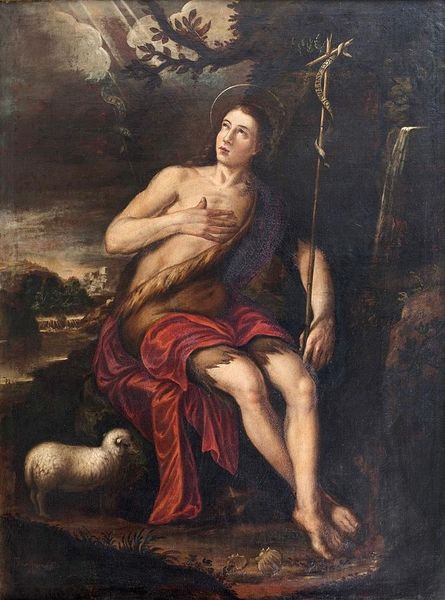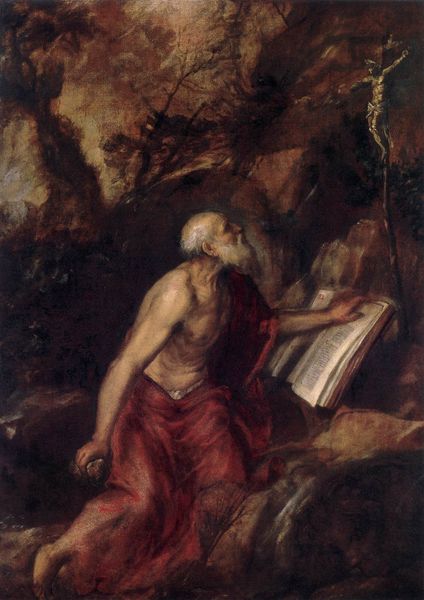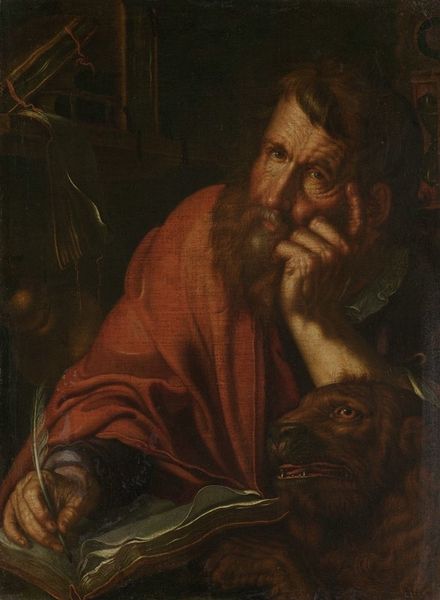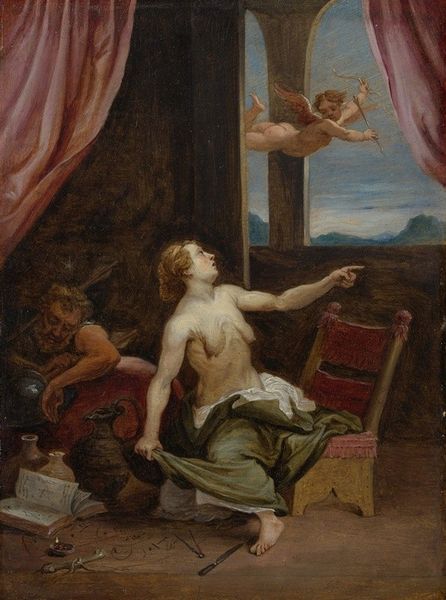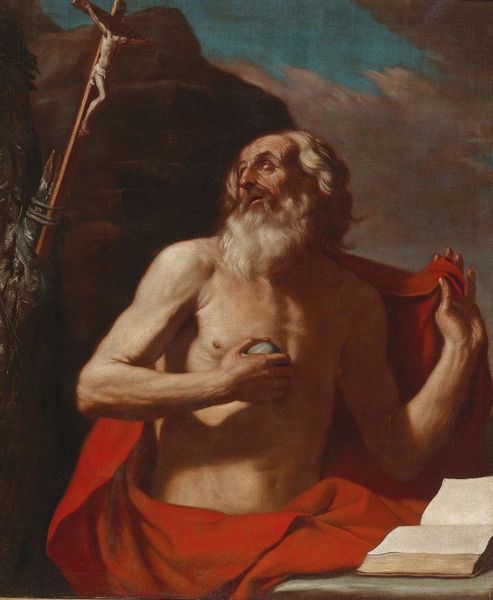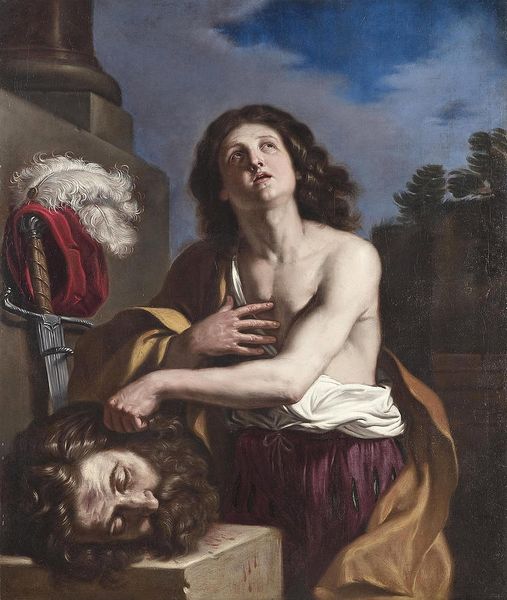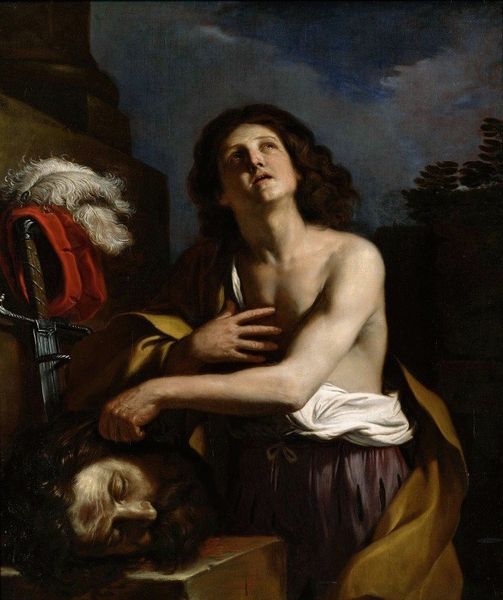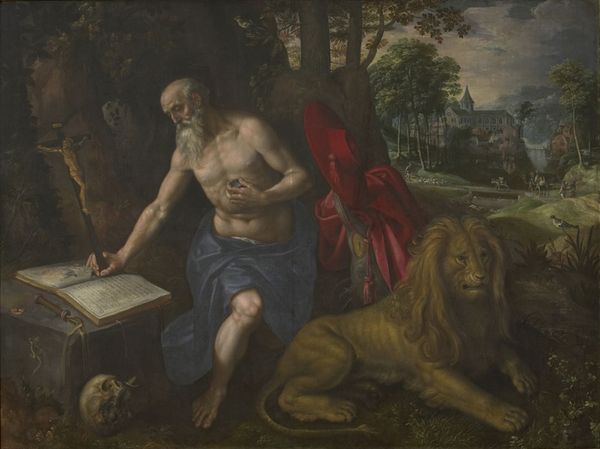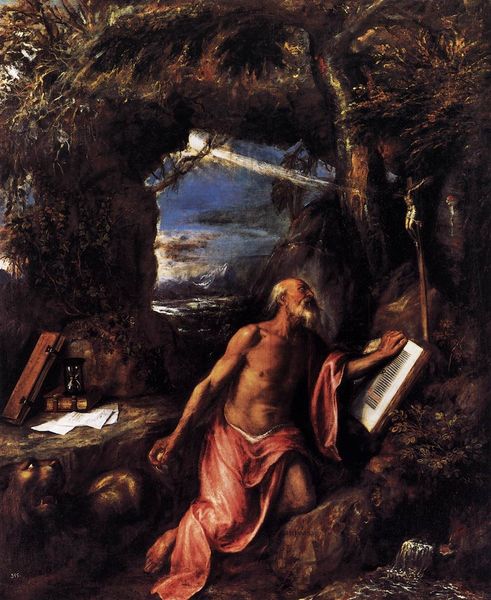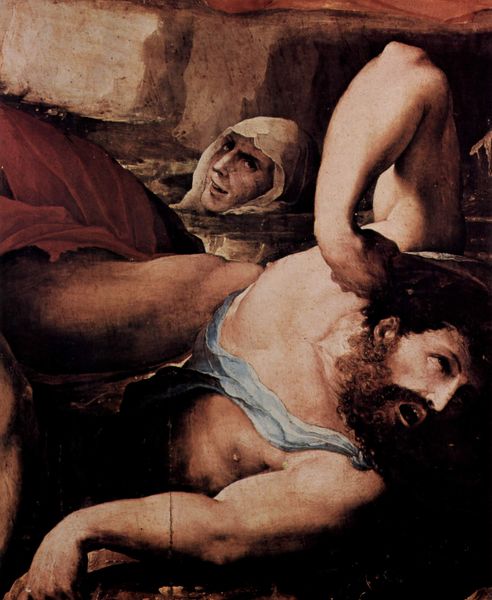
painting, oil-paint
#
portrait
#
venetian-painting
#
painting
#
oil-paint
#
mannerism
#
oil painting
#
christianity
#
painting painterly
#
history-painting
#
academic-art
#
portrait art
Dimensions: 251 x 167 cm
Copyright: Public domain
Curator: Paolo Veronese's "St Jerome," created around 1580, invites us into a contemplative space. Editor: My initial thought? The stark vulnerability in his physicality is immediately arresting, underscored by the simple hut setting. Curator: Indeed. Let's consider Jerome's historical weight. A Doctor of the Church, he was a pivotal figure in translating the Bible into Latin—the Vulgate. Veronese presents him not in opulent vestments, but stripped down, both physically and metaphorically, laboring in his study. The bare torso and setting allow Veronese to explore issues related to age and asceticism. Editor: Note, too, how Veronese emphasizes the tools of Jerome's trade: quill, ink, and those densely packed books stacked near the bottom left. This wasn't divine inspiration alone; this was tangible, laborious work. It highlights the act of translation as a kind of craftsmanship, doesn’t it? There's a beautiful tension between the saint's intellectual pursuits and his physical dedication, captured in Veronese's brushstrokes and his color palette of ochres and red. Curator: Absolutely. And within the historical context, this representation of scholarly dedication challenged the elitist notions associated with the Renaissance. Jerome’s humble surroundings are symbolic. The choice to paint him outside, beneath the makeshift roof suggests an association with nature. This resonates with broader critiques of power and hierarchy within the Church at the time, focusing instead on devotion. The presence of the lion reminds us that Jerome was not only a scholar but also a figure of moral courage and integrity. Editor: I see the color of his robe and that pink hat are the painting’s way to connect earthly passions and academic rigor! Veronese’s process shines through: his ability to capture both the material reality and the intangible spirit of the subject. Curator: Precisely. By deconstructing the myth and humanizing St. Jerome, Veronese opens a space for considering faith beyond dogma, revealing how deeply connected even a revered figure could be with his historical moment. Editor: So, while "St Jerome" reflects deep thought, for me it also embodies a reverence for the simple act of making. Seeing Jerome with these raw materials changes how one views saintliness; we all build our monuments.
Comments
No comments
Be the first to comment and join the conversation on the ultimate creative platform.
